If you’re a beginner gardener, you’re probably wondering: “What do potato plants look like?”. Look no further! Keep reading and discover with us how potatoes plant grows from seeds to full-size potatoes, and the appearance of the stem, leaves, potato flowers, and tubers.
Also, we will cover key points to note about your potato plants’ color and 3 different potato plant kinds. So, join us on this insightful journey!
Contents
What Do Potato Plants Look Like?
Potato plants are herbaceous perennials that belong to the nightshade family (Solanaceae). Here is a description of the appearance of potato plants:

1. Stem
Potato plant has a sturdy, erect stem that grows to a height of about 60-100 centimeters (24-40 inches) on average. The stem is typically green, and cylindrical, and can develop a woody texture as the potato plant matures.
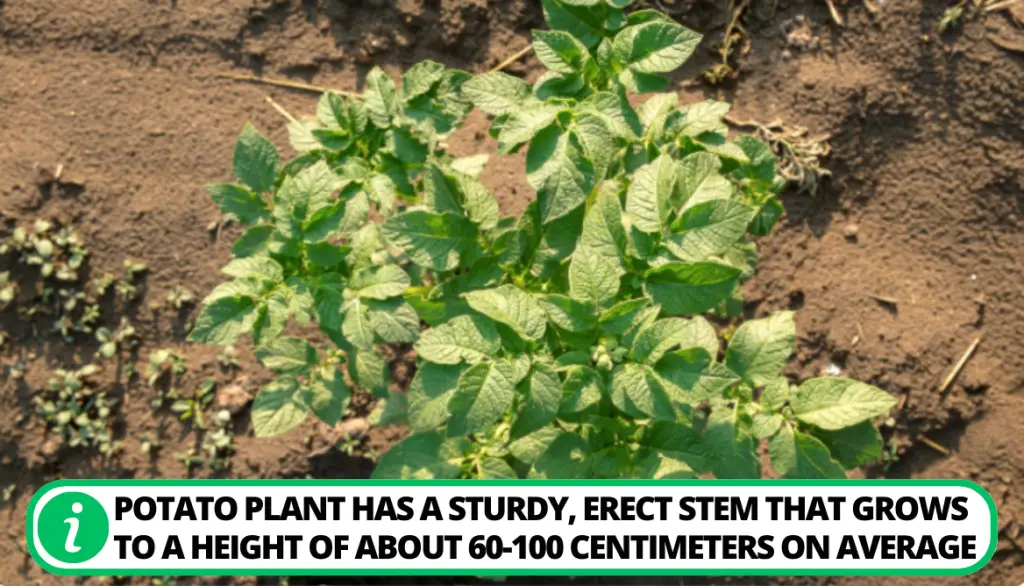
2. Leaves
The potato plant leaves are compound and alternate in arrangement. Each leaf consists of several leaflets. The leaflets are oval or lance-shaped, with a smooth or slightly lobed margin. The color of the potato plant’s leaves is typically bright green.
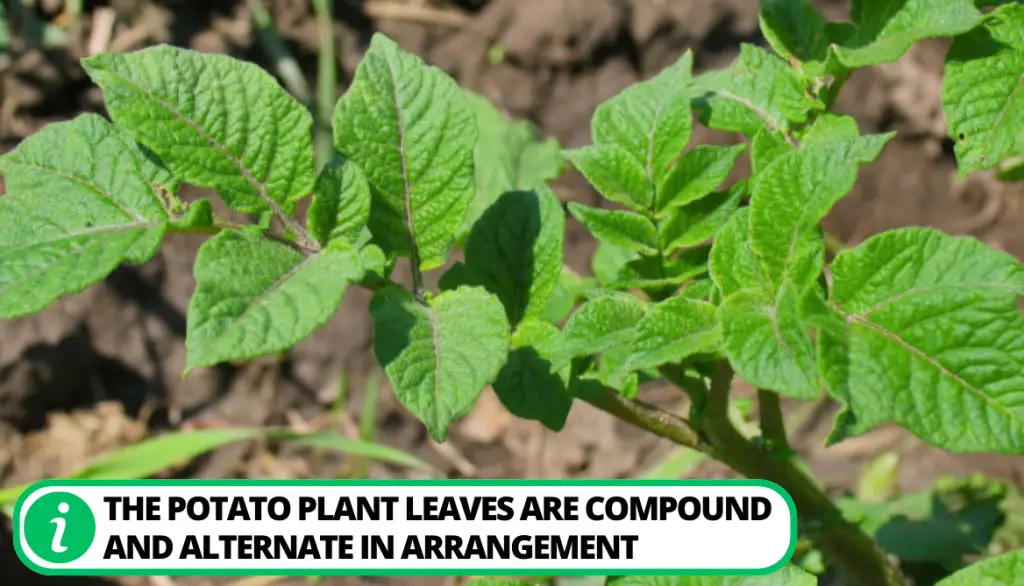
3. Potato Flowers
The potato plant produces small, white, star-shaped flowers that are arranged in clusters called inflorescences. The flowers have five petals and a yellow center. They usually bloom in the later stages of the plant’s growth.
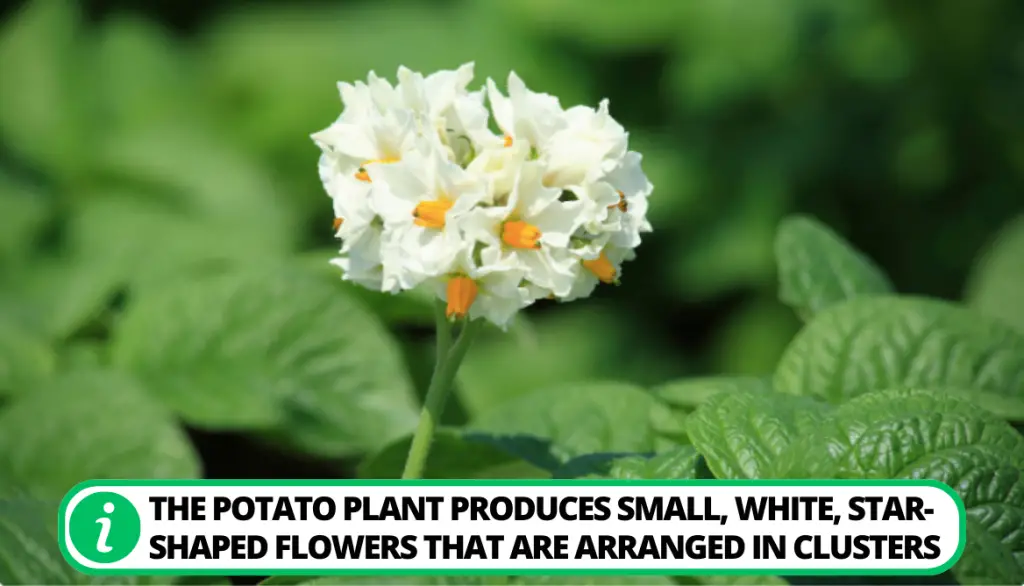
4. Potato Tubers
The most recognizable and valuable part of the potato plant is the tuber, which grows underground:
- They are swollen underground stems that function as storage organs.
- They vary in size, shape, and color depending on the potato variety.
- The skin of the tubers can be brown, yellow, dark red, or other colors, while the flesh is typically white, yellow, or pink.
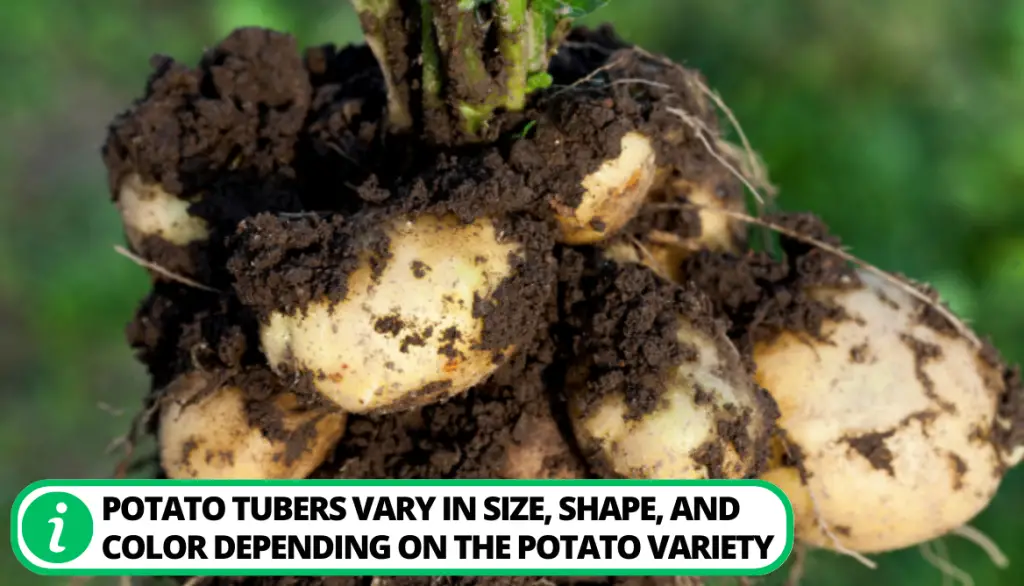
The Stages Of Potato Plants Grow and Development
Understanding the different stages of potato development allows growers to manage their crops effectively, ensuring optimal growth and maximizing yield.
The stages of potato plant development can be classified into four distinct phases: early development, middle development, flower stage, and ripening. Let’s explore each stage in detail:
1. Early Development
During the early development stage, the seed potatoes emerge from the ground as a sprout:
- Initially, the sprouts appear as small shoots with a few potato leaves.
- As the plant continues to grow, it develops more leaves and stems, forming a dense canopy of foliage.
- The underground root begins to form and enlarge, gradually developing into the potatoes we are familiar with.
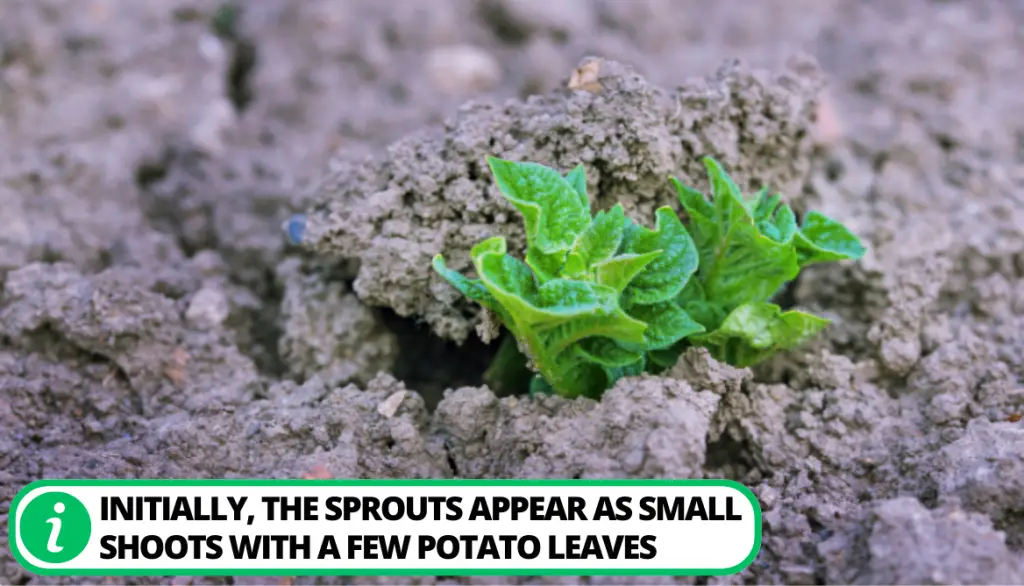
2. Middle Development
In the middle development stage, the potato plant experiences significant growth and expansion:
- The foliage becomes more abundant, with lush green leaves covering a larger area.
- The stems thicken and elongate, providing support to the growing plant.
- The underground tubers continue to enlarge, and their starch content increases.
- At this stage, the plant requires ample water and nutrients to support its vigorous growth.
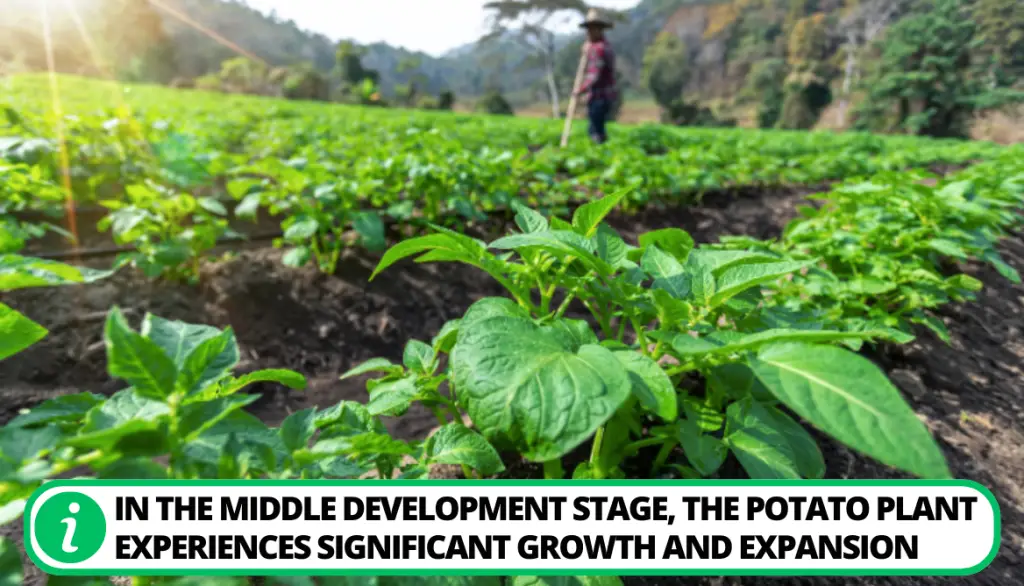
3. Flowering Stage
As the potato plant reaches this stage, it produces flowers that add color and beauty to the plant:
- The flowers typically appear above the foliage and can vary in color, ranging from white to shades of purple.
- These flowers are not only aesthetically pleasing but also serve a vital purpose in the reproduction of the plant.
- After pollination, the flowers give way to small green fruits that contain potato seeds.
However, potato seeds are rarely used for potato propagation, as potatoes are typically grown from tubers.
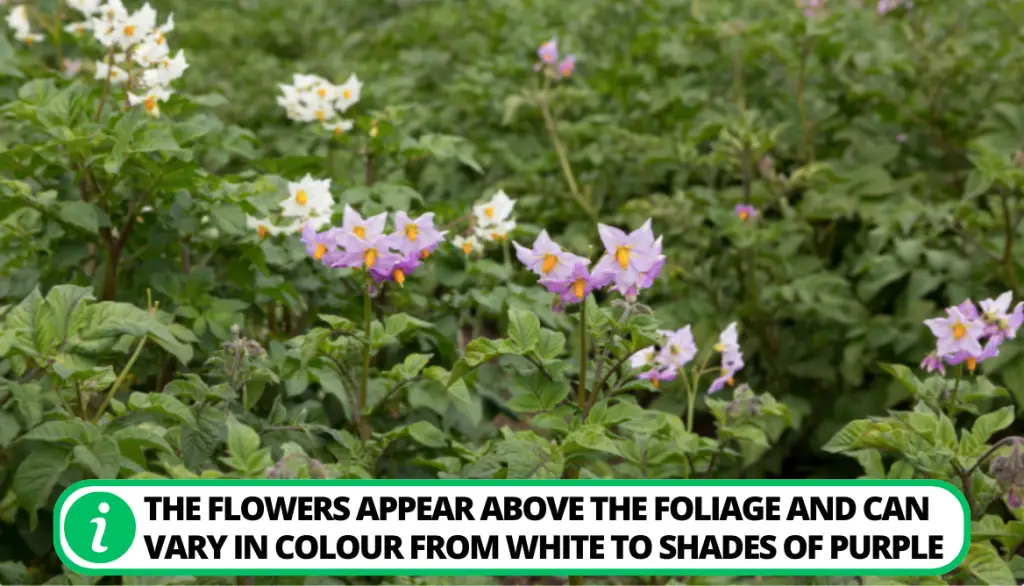
4. Ripening
The final stage of potato development is ripening:
- During this phase, the plant’s foliage begins to wither and turn yellow.
- This is a natural process indicating that you should harvest potatoes soon.
- This conversion enhances the flavor and texture of the potatoes.
- As the aboveground parts of the plant decline, tubers undergo physiological changes, including the conversion of starches into sugars.
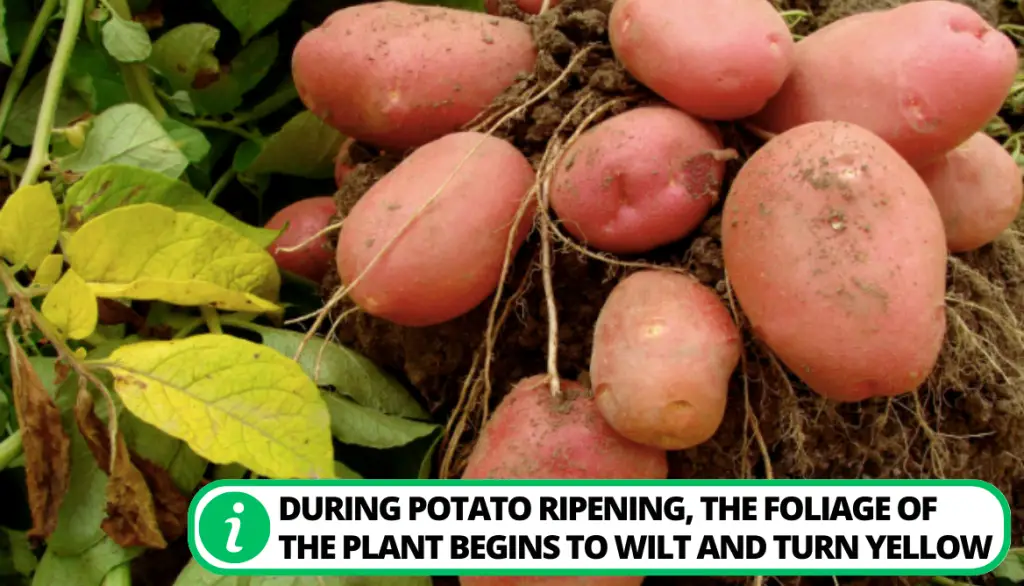
Different Potato Varieties
There are various types available, each with its own unique characteristics and culinary uses. Let’s explore three popular types;
1. Waxy Potatoes
Waxy potatoes have a higher moisture content and a lower starch content compared to other varieties.
- They are known for their firm texture and smooth, thin skin.
- Examples of waxy potatoes include Red potatoes, Charlotte, Fingerling potatoes, and New Potatoes.
- These potatoes hold their shape well when cooked.
- They are ideal for dishes like potato salads, soups, and roasted potatoes.
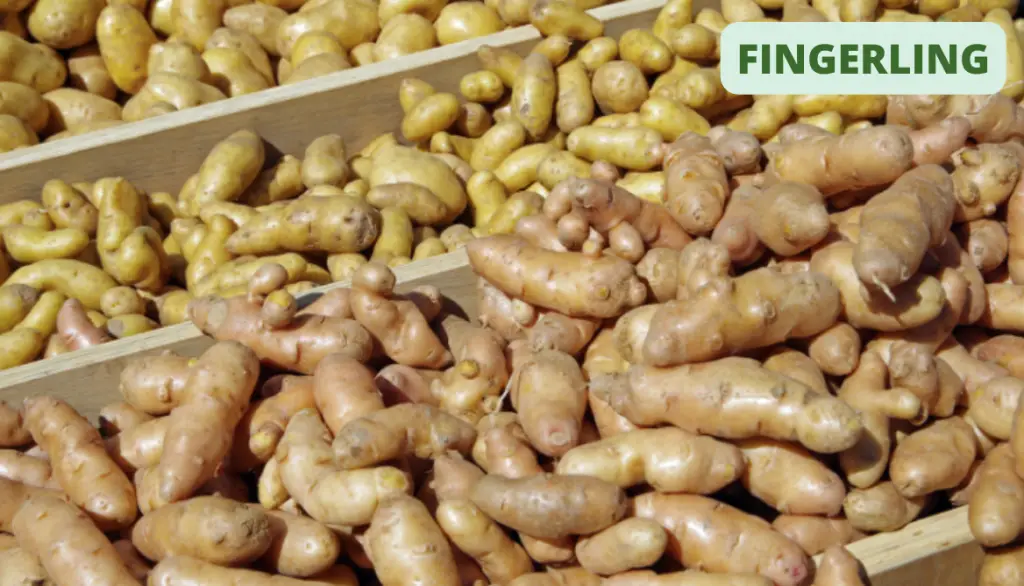
2. Starchy Potatoes
Starchy potatoes, also known as mealy or floury potatoes, have a high starch content and a lower moisture content.
- They have a fluffy and dry texture when cooked.
- Varieties like Russet and Idaho potatoes and sweet potatoes varieties fall into this category.
- Starchy potatoes are excellent for making mashed potatoes, French fries, and baked potatoes.
- They absorb flavors well, making them a popular choice for many recipes.
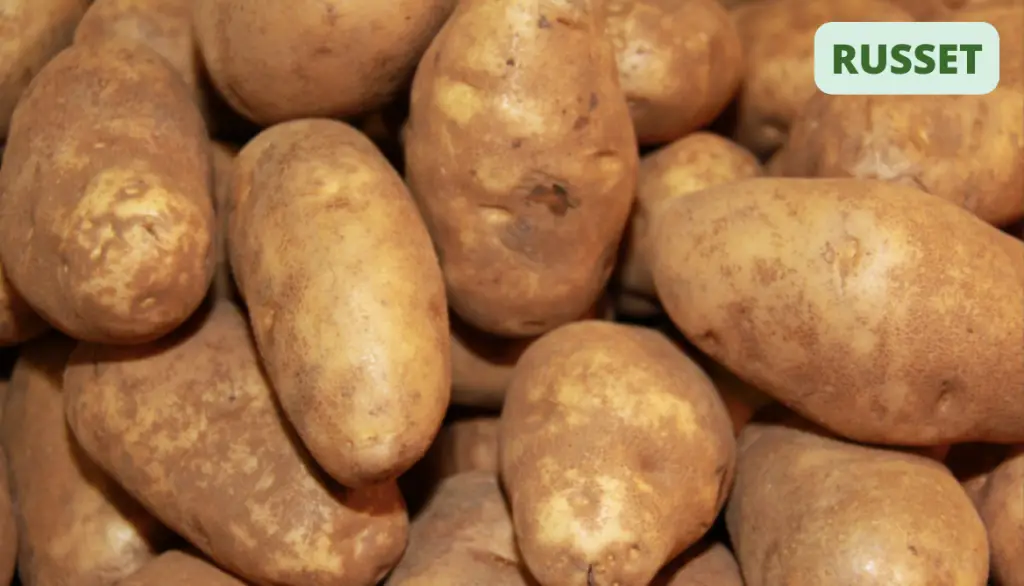
3. All-Purpose Potatoes
As the name suggests, all-purpose potatoes are versatile and can be used in various culinary applications.
- They have a balance between starch and moisture content, offering a middle ground in terms of texture.
- Yukon Gold and White Potatoes are common examples of all-purpose potatoes.
- These potatoes can be boiled, mashed, roasted, or used in casseroles, making them a flexible option for different dishes.
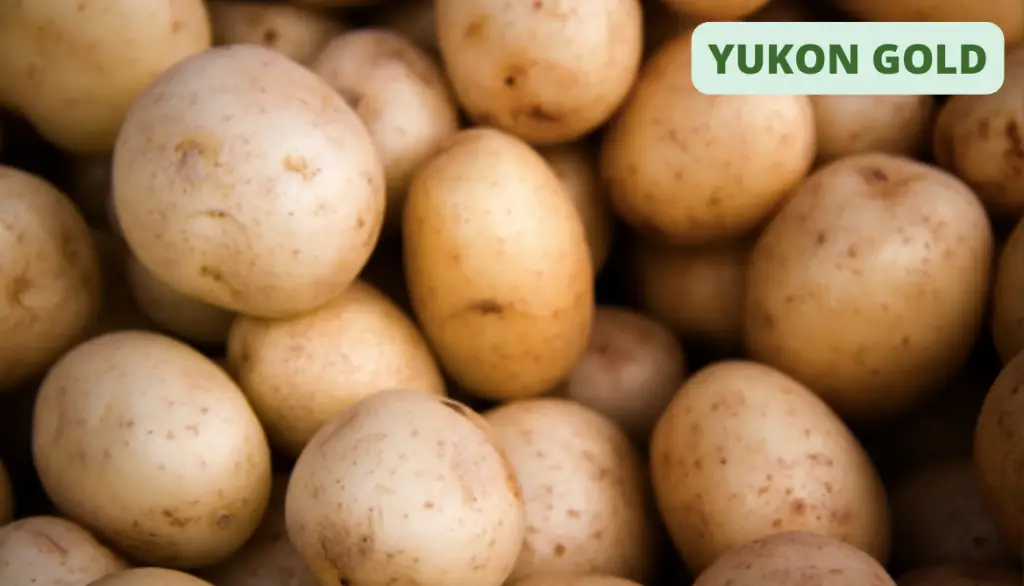
It’s worth noting that there are many other types of potatoes available, each with its own unique qualities. Exploring different varieties can add diversity to your culinary creations and enhance your overall cooking experience.
Key Points To Note About Your Potato Plants’ Color
Regular monitoring of your potato plants’ color and appearance is crucial for early detection of any nutrient issues, diseases, or pests. When it comes to the color of your potato plants, there are a few key points to note:
1. Nutrient Issues
The color of your potato plant can provide valuable information about its nutrient status:
- If the leaves of your potato plant turn yellow, for example, may indicate a nutrient deficiency, such as nitrogen, iron, or magnesium.
- When your plant foliage turns red it may indicate stress, nutrient deficiency (particularly phosphorus), or natural pigmentation in certain varieties.
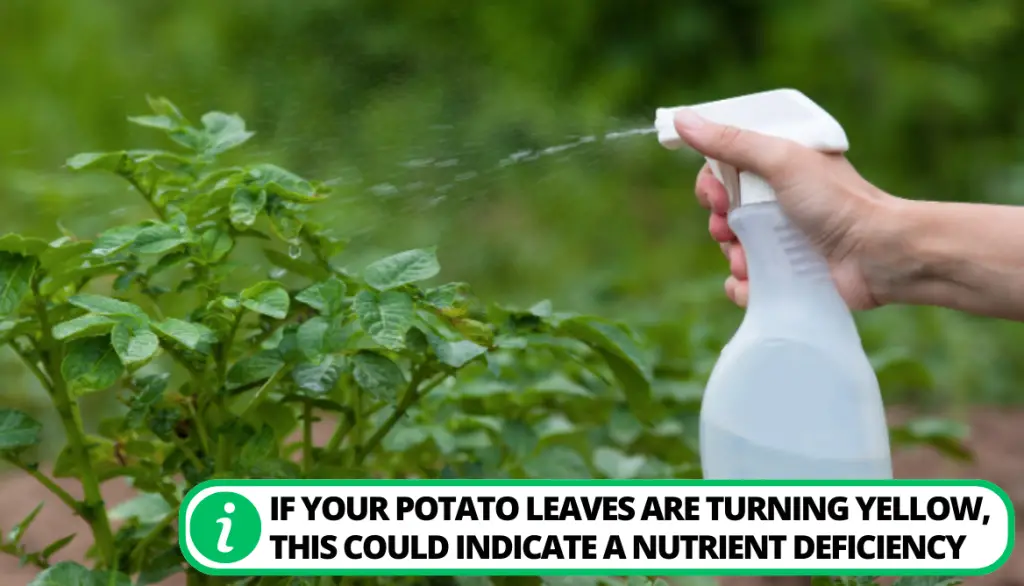
2. Diseases and Pests
Discoloration in potato plant can also be a sign of diseases and pests. Certain diseases, like late blight or early blight, can cause dark spots or lesions on the leaves, stems, or many tubers.
3. Aphids
Aphids are common pests that can infest potato plants. These small insects feed on the sap of the plants, causing distorted growth and yellowing of the potato plant leaves.
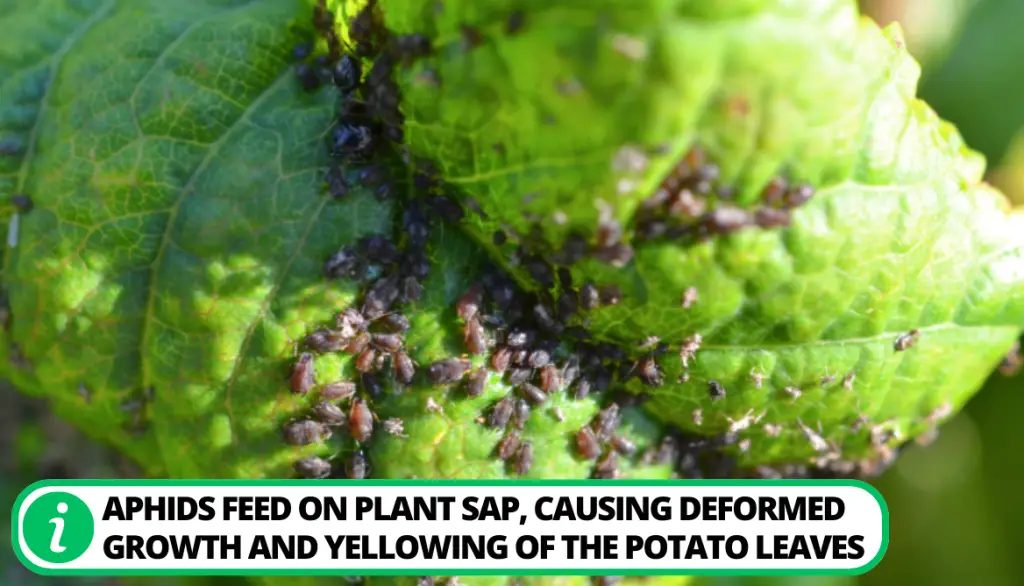
Soil Surface For a Potato Plant to Develop At The Right Stage
Planting potatoes requires a good surface for it to observe proper development. Here are the key points to take note of:
- The ground should be loose and friable when growing potatoes, to allow easy root penetration and development.
- Applying organic mulch around the base of potato plants helps maintain an even gardening surface, conserves moisture, suppresses weeds, and regulates soil temperature.
- Weed control is important to prevent competition for nutrients, water, and sunlight.
- Hilling, or mounding soil around the base of the potato plant, protects tubers from sunlight, provides loose soil for tuber expansion, and supports additional root development.
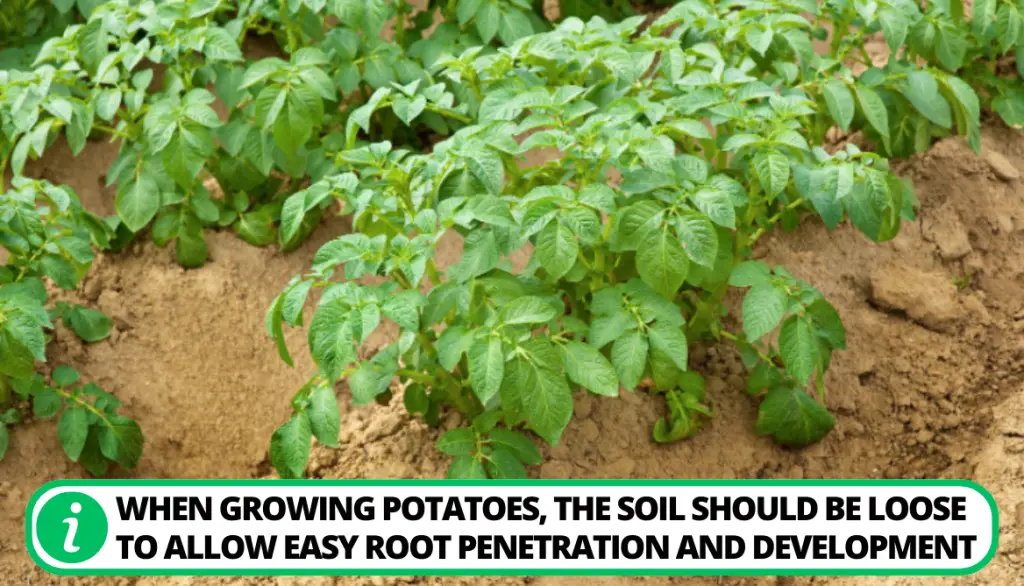
Where To Grow Potato Plant Aside Soil To Achieve Proper Development
Seed Potatoes can be grown in various settings aside from traditional soil-based cultivation. Here are some alternative methods to achieve proper development:
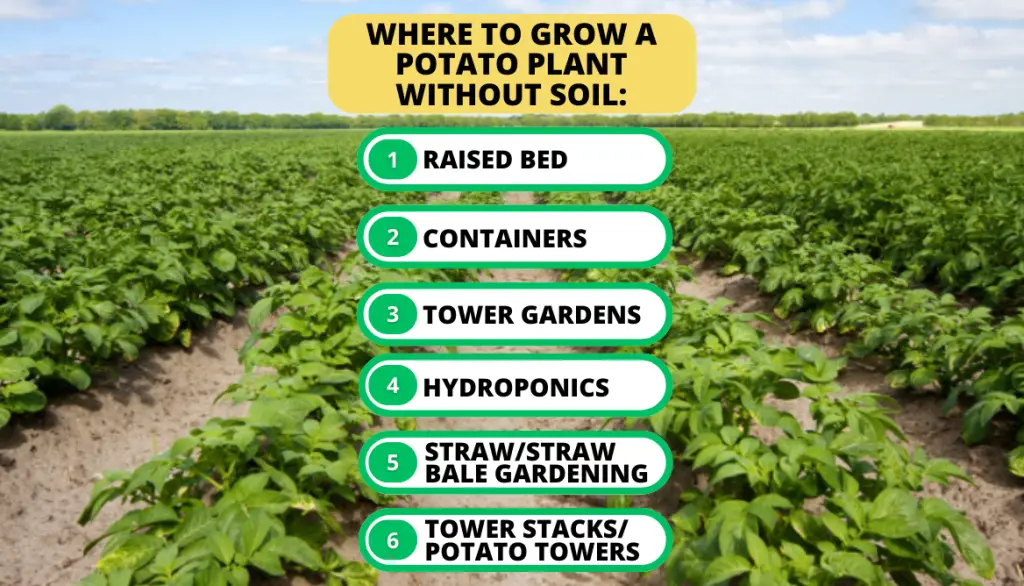
- Raised bed: Constructing raised beds allows you to create a controlled environment with well-drained soil.
- Containers: Potato plant grows in containers such as pots, grow bags, or even large buckets.
- Tower Gardens: Tower gardens utilize vertical space to grow potatoes.
- Hydroponics: Hydroponic systems allow you to grow potatoes without soil. Instead, they rely on nutrient-rich water solutions to provide the necessary elements to produce tubers.
- Straw/Straw Bale Gardening: In this method, the plant grows on a layer of straw or within straw bales.
- Tower Stacks/Potato Towers: It involves stacking layers of soil, compost, or straw and planting potatoes within the layers.
FAQ
What do potato plants look like when they first come up?
When potato plants first emerge from the soil, they appear as small, tender shoots.
How do you identify a potato plant?
A potato plant can be identified by its compound leaves with several leaflets, typically ranging from three to seven per leaf, and the presence of tubers underground, which are the edible part of the plant.
How can you tell when potatoes are ready to pick?
Potatoes are ready to be harvested when the foliage above the ground turns yellow and dies back.
Does potato grow in the root or stem?
Potatoes grow from modified underground stems called stolons, which are also referred to as rhizomes. So, technically, they are not considered roots or stems in the traditional sense. The potato plant itself grows from an underground tuber, which is an enlarged part of the stolon.
Conclusion
Potato plant has compound leaves, produce clusters of flowers, and develop starchy tubers beneath the soil. Their appearance can vary depending on factors such as variety and growing conditions.
The development of potato plants encompasses a fascinating transformation that begins with sprouting, progresses through leaf growth and tuber formation, and culminates in flowering. Each stage holds significance and contributes to the plant’s overall growth and productivity.
What type of potato do you like most? Leave your answer in the comment section, Thanks for reading.
- How to Get Potatoes to Sprout Eyes: Detailed Growing Guide with 3 Options - July 31, 2023
- Weight of a Medium Potato: Revealed in Detailed Guide - July 29, 2023
- Maris Piper Potatoes: 9 Substitutes You Should Know About - July 27, 2023
Hello! I’m Jessica Zander, a garden coach and consultant based in the Boston area (zone 6b), offering virtual consultations across the country and Canada.
I’ve been passionate about gardening since the early 1990s, and in 2022, I launched You Can Do It Gardening to empower individuals to feel more confident in their gardening endeavors.
Following a 30-year career in nonprofit finance and operations, I transitioned out of that field in mid-June of 2023 due to the growing demand for coaching services. Interestingly, my years of presenting financial statements to boards and finance committees proved to be valuable experience for teaching people about gardening! I enjoy sharing skills, providing guidance and suggestions, and collaborating efficiently with clients to make significant improvements to their outdoor spaces, both small and large. I also regularly teach at the Arlington Continuing Education and Cambridge Adult Education.
My approach is direct and practical, akin to Mary Poppins, but tailored to your garden. Clients find satisfaction in saving money and taking pride in their own gardening achievements.

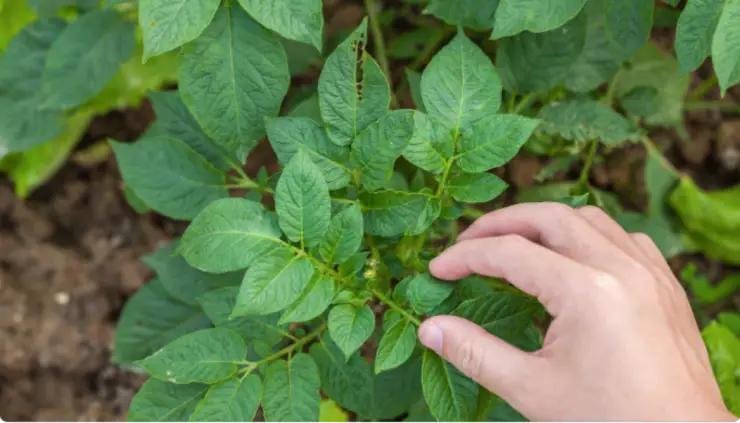

Add comment